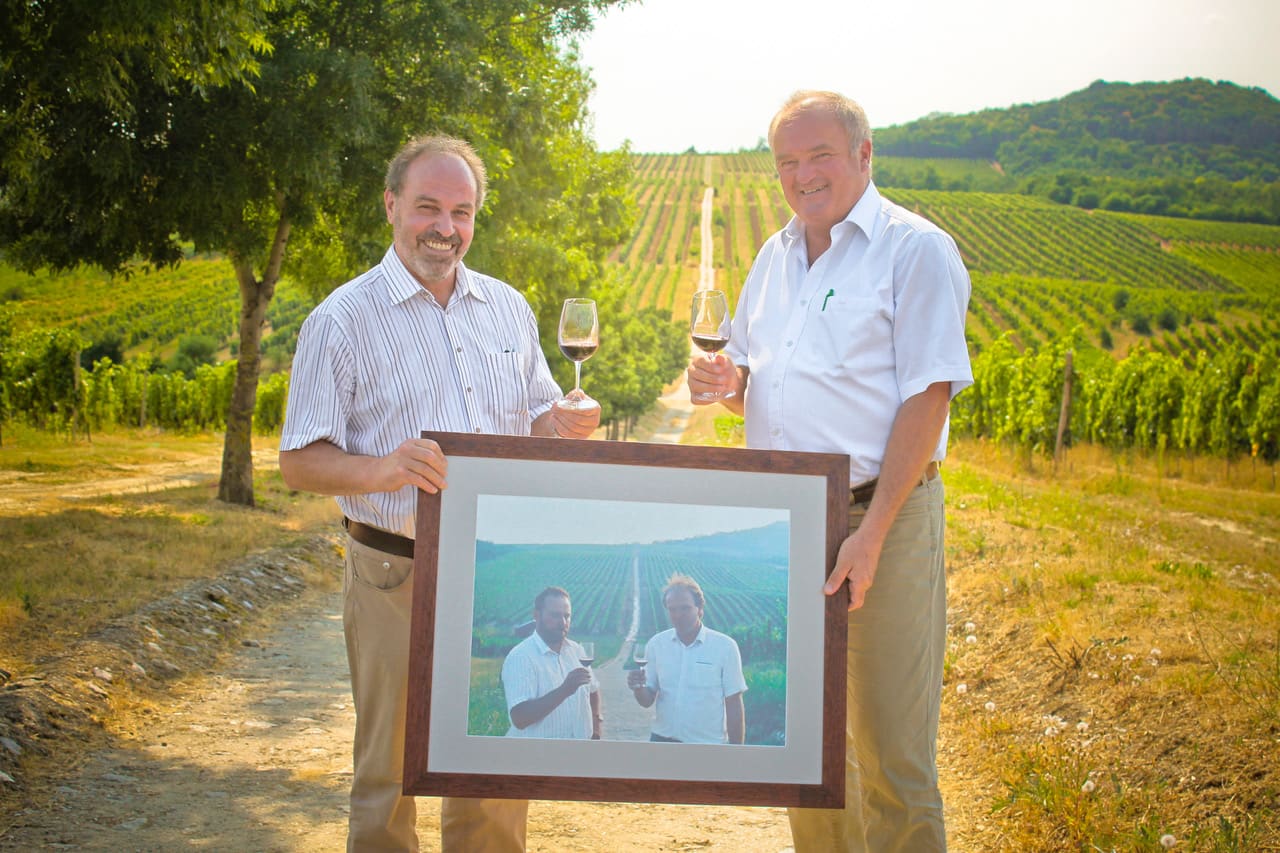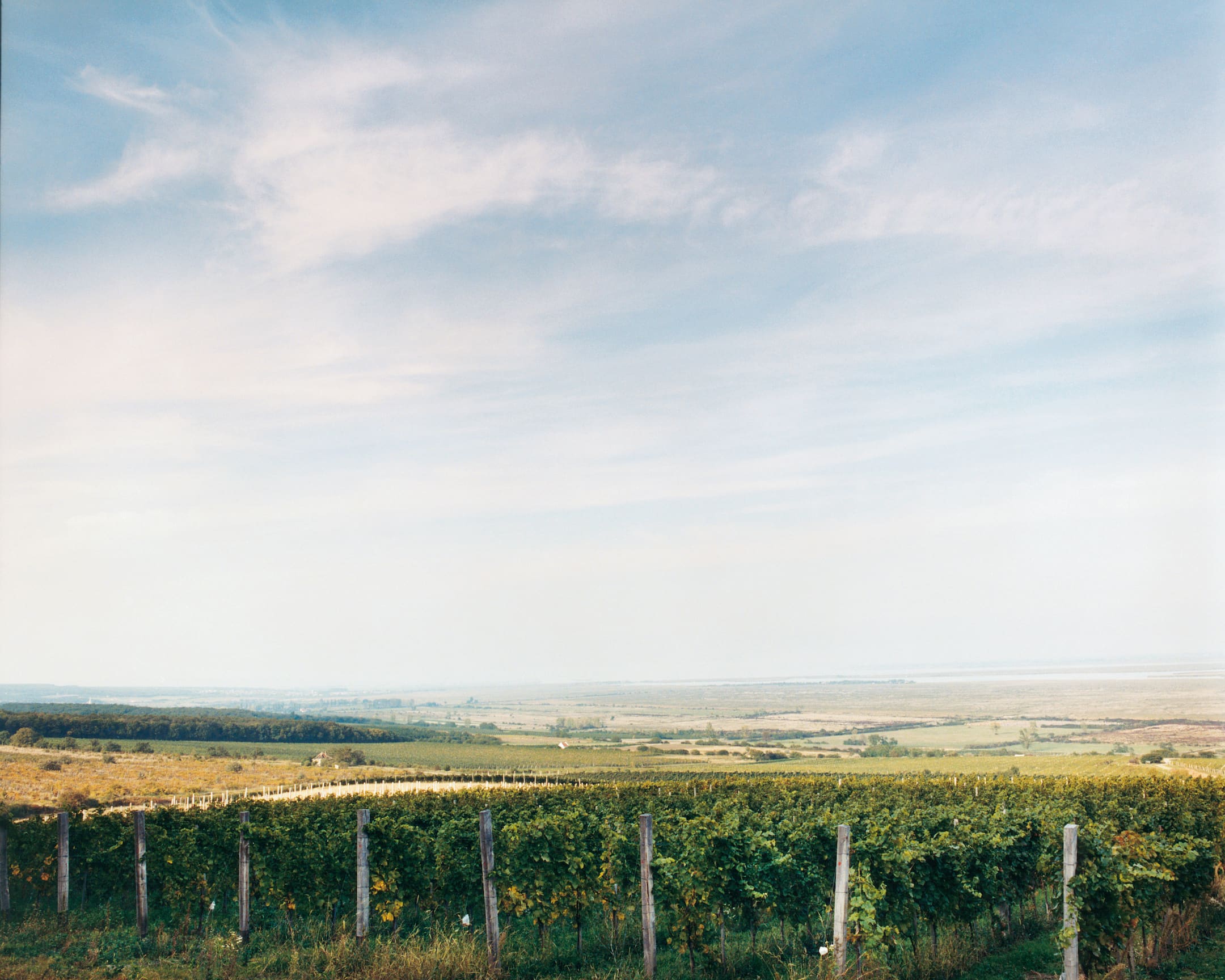Weninger in Hungary - A Long (Hi)story
Written by Franz Weninger on the 22nd of May 2020For our ancestors, this would not have been history, since Burgenland used to be a part of Hungary up until 1921. Back then, we German-speaking wine growers were called “bean growers”, as we not only farmed wine grapes but also vegetables and especially beans between the vineyards. It was only after the Second World War that this tradition disappeared as monoculture farming took over.
Video: Oedenburger Ponzichter, harvest in our Steiner vineyard around 1936
One could say that my father grew up at the edge of the world: 10 kilometres from the Eastern border. The fact that the East was deemed a collective evil during the Cold War only stoked my father’s curiosity. How did the Hungarians really live, and what was there to discover?
When the border was reopened after the fall of the Berlin Wall and as travelling became much easier, he hopped into a car and went to explore the country.
It was the era of modernisation in Burgenland’s viticulture. As in many wine regions of the world, this modernisation and mechanisation was driven especially by Parker, which is how new oak, Merlot and Cabernet Sauvignon came to Burgenland.
During his travels through Hungary, my father discovered Villány, a region in the Southern part of the country, bordering on Croatia. Cabernet Franc was grown there from as early as 1881. The grape variety breeder Teleki (Rootstock T5C), who was cultivating rootstocks, had also begun to import vines from France.
However, the actual reason why my father fell in love with Villány was the antiquated dialect of the resident Danube Swabians and the warmth with which they welcomed him.
This is why in the year 1992, he founded and heavily invested in a winery in Villány together with Attila Gere, a former forester. My mother was up in arms and full of worry about the hard-earned money, but my ever-stubborn father was not to be deterred, and he was rewarded for it: a mere 4 years later, the new winery was paid off thanks to his hard-working partner Attila Gere. They were then able to place the next investments.

I can still remember this time very well, particularly how my father would often hang on the telephone for hours, trying to get a line to Villány through an operator in Hungary. It would often be easier to get into the car and do the five-hour drive over badly tarred roads into the South – these car trips were also forever etched into my memory. Apart from the lonely villages, I was always fascinated by the countless horse carriages that we would overtake, and then by the coming together of such diverse characters in Villány. The road trips to Villány eventually became a ritual in our family.
Due to the immense success of the Weninger-Gere wines in Budapest, we were asked in 1997 if we were interested in buying vineyards in Sopron. At first, we were sceptical because we already had Blaufränkisch in Horitschon, and the climate could not be so very different from our own just across the border. But then when we went to take a look at the vineyards on offer, we had no choice but to change our minds. Under overcast skies we drove up to the vineyard slopes, and just as we arrived, the fog lifted, showing us Lake Neusiedl as we had never seen it before: no human settlements in sight; just reeds, nature and the water. There were gneiss and mica soils with a history that only Wachau or Rust could boast of in Austria.
The Hungarian side of the lake had been declared a national park already back in the communist era, and that included the entire area, encompassing 237km2, compared to the humble 97km2 on the Austrian side. This part of the lake is therefore virtually untouched by humans, and there is an incredible power radiating from it.
And yet, my mother was not completely convinced and did not want to attend the necessary process of establishing the business. However, Hungarian law requires at least two people to start up a business, so that was my chance. At the tender age of 18, I became the owner of vineyards with a beautiful view of Lake Neusiedl and the hope of economic development in the region.

Full of enthusiasm, we began working on our Hungarian soils, and planted international varieties such as Syrah – we were the first in the country to do so. With our first vintages from 2000 onwards, I became a rising star on the Hungarian wine scene and won several prestigious awards.
However, as I had to realise from 2004 on, our initial hope for financial success came to a grinding halt. The same situation was true for the entire country: slowly but surely Hungary’s hopes in the West were starting to wane.
In Austria and also globally, nobody was interested in Hungarian wine, and local sales in Hungary were also lower than expected since Sopron wine had unfortunately gained a bad reputation during the communist era. After the 2008/2009 financial crisis, the situation reached a critical point and our wine sales almost completely collapsed in Hungary. I was partly to blame for this because my choice to develop a more elegant style of wine with less oak, spontaneous fermentation and no filtration from 2000 onwards, followed by the use of concrete and amphorae from 2006, were met with raised eyebrows from our clients in Austria as well as in Budapest. And then, my excited announcement that I would be converting to biodynamic farming earned me a reputation of being crazy. My statement that certain “wine faults” could actually improve the character of a wine caused me to be seen more and more as a crackpot in the ever more industrialised Hungarian wine world.
I felt forced to sell my wines cheaply overseas. Little by little, my dream was shattering. From a financial point of view, it was becoming more and more difficult to pay off the debt for the newly constructed cellar, and I was already prepared for the possibility of losing the wine estate.
However, in 2010, several things changed. The international wine scene said goodbye to Parker, and the natural wine movement was gaining traction. These clients were suddenly open to new things and became interested in Hungarian grape varieties and unknown regions. Top restaurants around the world were starting to list my wines. One could even say that Hungarian wine is a trend on this wine scene. It is also worth noting that more and more Austrian wines are sporting Hungarian names on their labels.
In the end, I think that I would have never completely understood the Hungarian soul had I not also experienced this low. The country seems to love melancholy, and it’s no coincidence that Hungarian literature is known for it. The sheer, endless expanse of the Hungarian plains also has a part to play there.
But after every low there is a high, and in 2015 my financial situation also started changing. My joy in the Hungarian vineyards blossomed again. This is especially evident in our new wines such as the Steiner Furmint and the border-crossing wines such as the Rózsa Petsovits or the soon-to-be-released Ponzichter.
Weninger would undoubtedly not be what it is without our involvement in Hungary. Even when we were on the verge of giving up, it moulded us and focused our attention on other things. These experiences have made us into what we are today.